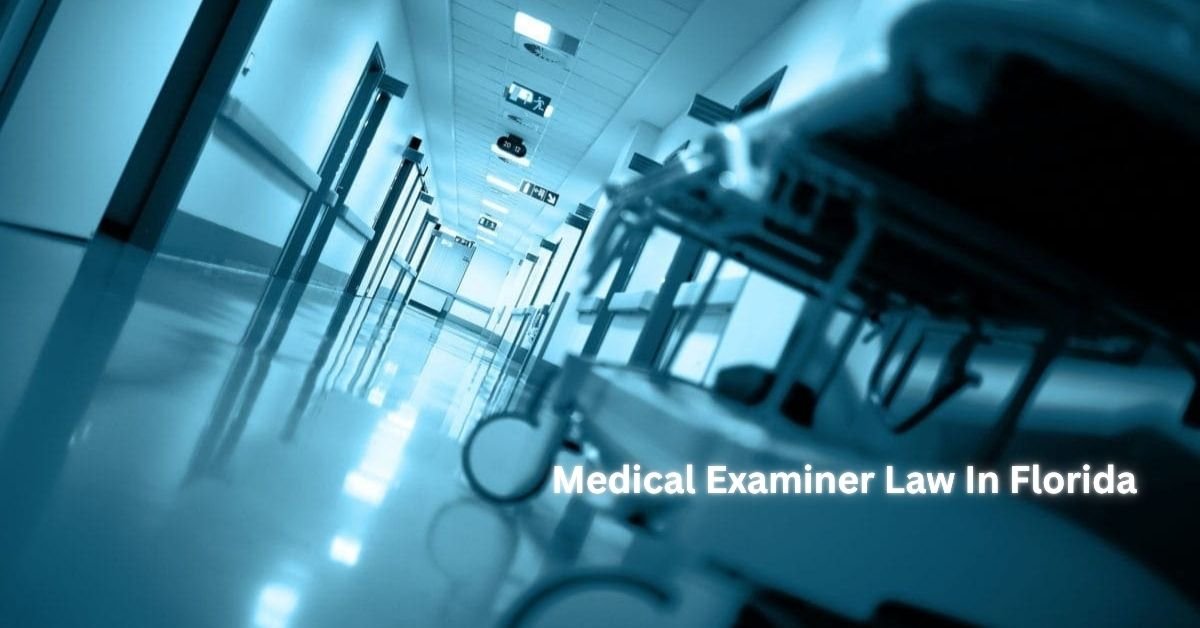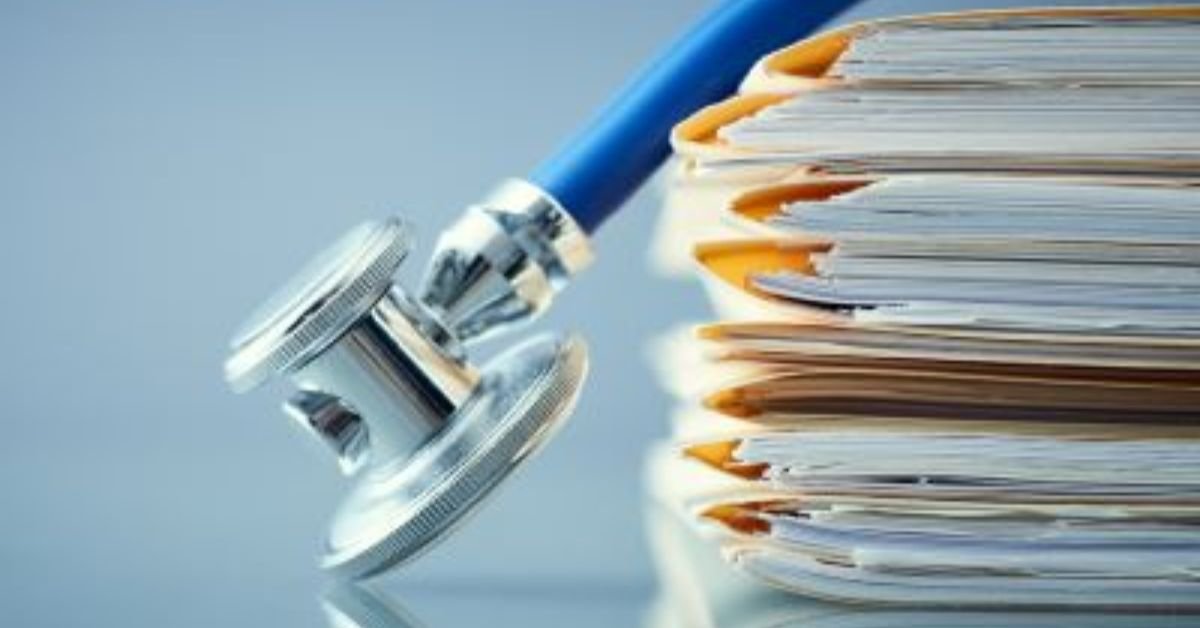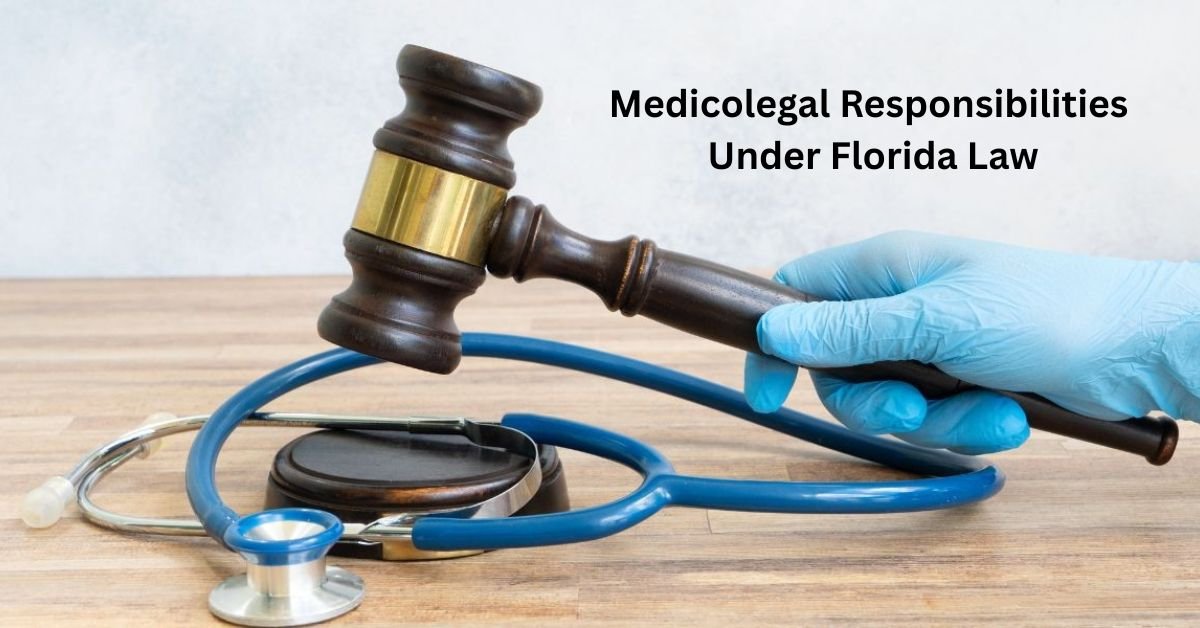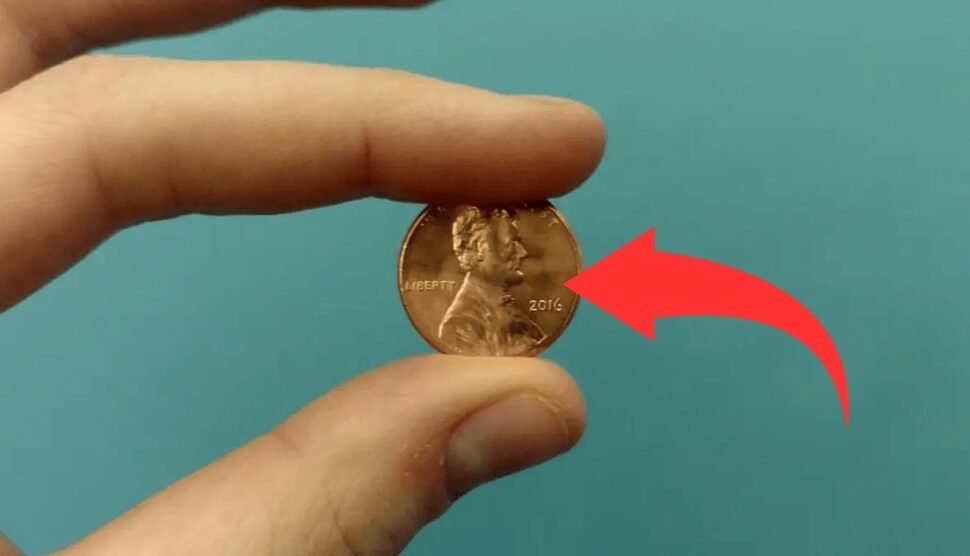Medical examiner law in Florida governs the investigation of deaths that occur under specific legal, medical, or suspicious circumstances. This legal framework ensures that causes of death are accurately determined, public health threats are identified, and evidence is preserved for judicial processes. Florida’s approach is based on a district medical examiner system, established under state statute and managed by the Medical Examiners Commission, a division of the Florida Department of Law Enforcement (FDLE).
This article provides a comprehensive overview of medical examiner law in Florida, focusing on statutory authority, death investigation protocols, jurisdiction, appointment procedures, and regulatory compliance.
1. Statutory Authority: Chapter 406, Florida Statutes
The foundation of Florida’s medical examiner system is outlined in Chapter 406 of the Florida Statutes, titled Medical Examiners; Disposition of Human Remains. This chapter:
- Establishes the legal requirement for medical examiner investigations
- Creates the Medical Examiners Commission (MEC)
- Defines the types of deaths requiring reporting and investigation
- Grants legal authority for autopsies, toxicology, and death certification
- Sets forth procedures for body transport, evidence handling, and family communication
Under this statute, Florida’s system is district-based, with 25 geographically defined medical examiner districts covering all 67 counties.
2. Types of Deaths Requiring Investigation
Per Section 406.11, the following types of deaths must be reported to the local District Medical Examiner:
- Deaths from violence (homicide, suicide, accident)
- Sudden, unexpected deaths in apparently healthy individuals
- Deaths occurring without known medical history
- Deaths in custody or under law enforcement supervision
- Deaths occurring in public institutions, including correctional facilities
- Deaths related to occupational exposure or suspected public health threats
- Deaths during surgical procedures or under anesthesia
The medical examiner has statutory jurisdiction to assume control of the body, conduct an investigation, and certify the cause and manner of death.
3. Medical Examiners Commission (MEC)
The Florida Medical Examiners Commission oversees the statewide medicolegal system. Created under Chapter 406, the MEC is composed of representatives from:
- Florida Department of Law Enforcement (FDLE)
- Florida Medical Association
- State attorneys and public defenders
- County commissioners and sheriffs
The Commission’s responsibilities include:
- Appointing and reappointing District Medical Examiners
- Establishing minimum performance standards
- Investigating complaints or misconduct
- Reviewing annual workload and performance reports
- Ensuring operational consistency across districts
The MEC serves as a central regulatory body to maintain the integrity and professionalism of Florida’s forensic death investigation system.
4. Appointment and Qualifications
District Medical Examiners are appointed by the MEC, subject to approval by the relevant board of county commissioners in the district. Qualifications include:
- A current Florida medical license
- Board certification in forensic pathology by the American Board of Pathology
- Experience in conducting autopsies and testifying in court
Medical examiners are typically appointed for three-year renewable terms and may be removed for cause. Larger districts may also employ associate or deputy medical examiners under the supervision of the chief examiner.
5. Autopsies and Investigative Procedures
Under Florida law, medical examiners are authorized to perform:
- Complete or partial autopsies
- Toxicological screening
- Radiographic imaging
- Histological analysis
- Scene visits and death reconstructions
Autopsies do not require family consent when performed under legal authority outlined in Chapter 406. The examiner is required to act independently and objectively, with findings recorded in official autopsy reports.
The goal of the investigation is to establish:
- The cause of death (e.g., myocardial infarction, gunshot wound)
- The manner of death (e.g., natural, accidental, homicide, suicide, undetermined)
- Any contributing conditions or forensic evidence relevant to a legal case
6. Death Certification
Medical examiners are responsible for completing and signing death certificates for all deaths falling within their jurisdiction. The certification process includes:
- Determining the cause and manner of death
- Submitting records to the Florida Bureau of Vital Statistics
- Providing information for family notification, insurance, and burial/cremation permits
In cases not falling under the medical examiner’s jurisdiction (e.g., expected natural deaths), the attending physician is typically responsible for certification.
7. Interaction with Law Enforcement and Legal System
Florida’s medical examiner law requires seamless cooperation between the examiner’s office and law enforcement agencies. Responsibilities include:
- Preserving and transferring physical evidence
- Maintaining chain-of-custody documentation
- Collaborating with homicide or crime scene units
- Providing expert witness testimony in court
Medical examiners often testify on matters such as injury interpretation, time of death, toxicology results, and trauma mechanisms. Their impartial, scientific conclusions are integral to the criminal justice process.
8. Public Records and Transparency
Florida has some of the most comprehensive open records laws in the country. Under Chapter 119 of the Florida Statutes, medical examiner records—such as autopsy reports, photographs, and toxicology findings—are generally considered public records, unless exempted for reasons such as:
- Ongoing criminal investigations
- Juvenile decedents
- National security or public safety concerns
Members of the public, media, or legal community may request these records through a formal public records request process.
9. Facility and Staff Requirements
While Chapter 406 does not prescribe facility specifications, most district medical examiner offices are equipped with:
- Autopsy suites
- Body storage and refrigeration areas
- X-ray and imaging equipment
- Secure evidence rooms
- Administrative offices
Staff commonly include forensic pathologists, autopsy technicians, medicolegal death investigators, evidence custodians, and administrative personnel.
District offices must also comply with local health, safety, and accreditation standards, and many voluntarily seek accreditation through the National Association of Medical Examiners (NAME).
10. Public Health and Mass Fatality Preparedness
Medical examiners contribute to public health surveillance by identifying:
- Disease outbreaks
- Drug overdose trends
- Workplace or environmental hazards
They also play a vital role in mass fatality incidents, including natural disasters, transportation accidents, and acts of terrorism. In such events, examiners coordinate with emergency management, law enforcement, and public health agencies to conduct victim identification, forensic documentation, and morgue operations.
Information on public health reporting can be found through the Florida Department of Health.
Conclusion
Florida’s medical examiner law provides a robust legal framework for forensic death investigation, public health monitoring, and criminal justice support. Grounded in Chapter 406, the system prioritizes scientific integrity, independence, and public service. Through its district-based model and centralized oversight by the Medical Examiners Commission, Florida ensures that deaths are investigated thoroughly, legally, and with transparency. For medical examiners, law enforcement, and the public alike, understanding the scope and operation of this law is essential to safeguarding both individual rights and the broader interests of justice.












